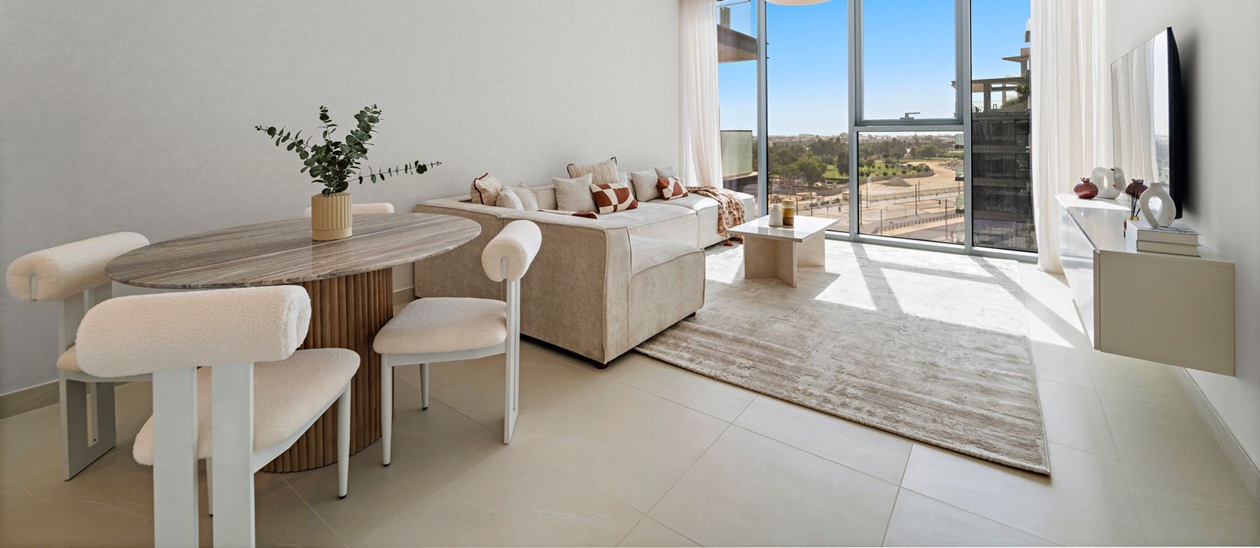How to Read an Off-Plan Floor Plan Like a Pro
Friday, 10 October 2025
Buying an off-plan property can be an exciting journey. One of the first steps in this process is understanding the floor plan. A floor plan gives you a visual representation of the property before it is built, allowing you to imagine how your future home will look and function. While reading floor plans may feel daunting at first, with the right approach, you can evaluate designs like a pro and make confident decisions.
Table of Contents
- What Is an Off-Plan Floor Plan?
- Key Elements of a Floor Plan
- How to Evaluate a Floor Plan
- Common Symbols in Floor Plans
- Frequently asked questions
What Is an Off-Plan Floor Plan?
An off-plan floor plan is a detailed drawing that shows the layout of a property that is still under construction. It represents rooms, doors, windows, walls, and other features, helping buyers visualize the final space. Most plans also include room dimensions and symbols for elements like doors, windows, and furniture, giving a clear idea of the property’s size and flow. Understanding these details ensures you know exactly what you are investing in.
Key Elements of a Floor Plan
To read a floor plan effectively, focus on these crucial aspects:
1. Scale and Dimensions
Floor plans are drawn to scale, meaning measurements on the plan are proportionate to real-life sizes. Room dimensions show the exact size of each space, helping you plan furniture placement and daily living.
2. Walls and Openings
Lines on the plan indicate walls — thick lines for structural walls and thinner lines for partitions. Doors and windows are marked by breaks in the walls. Proper placement of these elements is key for natural light, ventilation, and smooth movement between rooms.
3. Room Labels
Labels like ‘kitchen,’ ‘living room,’ and ‘bedroom’ indicate the intended purpose of each area. Some plans also highlight features such as en-suite bathrooms or walk-in closets, helping you assess whether the layout suits your needs.
4. Furniture Layouts
Many plans include suggested furniture arrangements. These layouts show how beds, sofas, and tables can fit within rooms, helping you visualize a functional and spacious home.
5. Orientation
Orientation refers to the property’s position relative to the sun. A north indicator helps you understand how sunlight enters the home, ensuring naturally bright and well-ventilated living spaces.
6. Outdoor Spaces
Balconies, terraces, and gardens are often marked on the plan with shading or patterns. Evaluating these areas ensures they are functional and accessible, adding extra living space and value.
How to Evaluate a Floor Plan
Once you understand the elements, the next step is to evaluate whether the design meets your lifestyle needs:
- Room Sizes and Layout: Check if the bedrooms, kitchen, and living areas are spacious and practical. Ensure rooms flow smoothly and are conveniently located.
- Light and Ventilation: Confirm windows are well-placed for natural light and airflow. Bright, well-ventilated rooms enhance comfort and overall living experience.
- Storage Space: Look for built-in wardrobes, cabinets, and clever storage solutions. Adequate storage keeps the home organized and clutter-free.
- Future Flexibility: Consider whether rooms can be repurposed as your needs change — for example, a study becoming a guest room.
- Privacy and Noise: Evaluate the placement of bedrooms and bathrooms relative to common areas. Proper layout ensures privacy and a peaceful living environment.
- Outdoor Space: Assess the size and accessibility of balconies, terraces, or gardens. Functional outdoor areas provide relaxation and recreational space.
- Personal Preferences: Ensure the design suits your lifestyle. Whether you prefer open-plan living or separate rooms, the floor plan should align with your comfort and preferences.
Common Symbols in Floor Plans
Understanding symbols will help you interpret floor plans more effectively:
- Walls: Straight lines; thick for structural, thin for partitions.
- Doors: Arcs indicating swing direction.
- Windows: Lines or rectangles on walls, sometimes square-shaped.
- Stairs: Parallel lines with arrows showing the step direction.
- Furniture: Outlines of beds, sofas, tables, etc.
- Bathrooms: Circles and rectangles for sinks, toilets, and bathtubs.
Reading an off-plan floor plan is a crucial step in buying your ideal home. By focusing on room sizes, layouts, orientation, storage, and outdoor spaces, you can assess whether the property meets your needs. Understanding symbols and layouts allows you to make informed decisions and choose a home that is practical, beautiful, and perfectly suited to your lifestyle.
With careful evaluation, you can navigate off-plan floor plans like a pro — ensuring that your future home is exactly what you envisioned.
Frequently Asked Questions (FAQs)
What is an off-plan floor plan?
An off-plan floor plan is a detailed drawing of a property under construction, showing the layout, dimensions, doors, windows, and other features before it is built.
Why is it important to read a floor plan carefully?
Reading a floor plan helps you understand the property’s layout, room sizes, storage options, and flow, ensuring it meets your lifestyle and investment needs.
What key elements should I focus on in a floor plan?
Focus on scale, room dimensions, walls, openings, furniture layouts, orientation, and outdoor spaces to evaluate functionality, light, and ventilation.
How can I assess the practicality of a floor plan?
Check room sizes, storage solutions, layout flow, privacy, noise levels, and flexibility for future use to ensure the property suits your lifestyle.
What do common symbols on floor plans mean?
Symbols indicate walls, doors, windows, stairs, furniture, and bathroom fixtures, helping you visualize the property’s features and space usage accurately.





